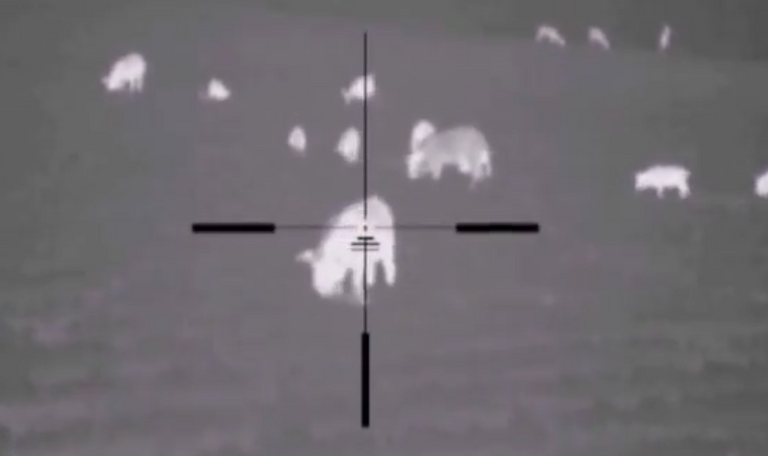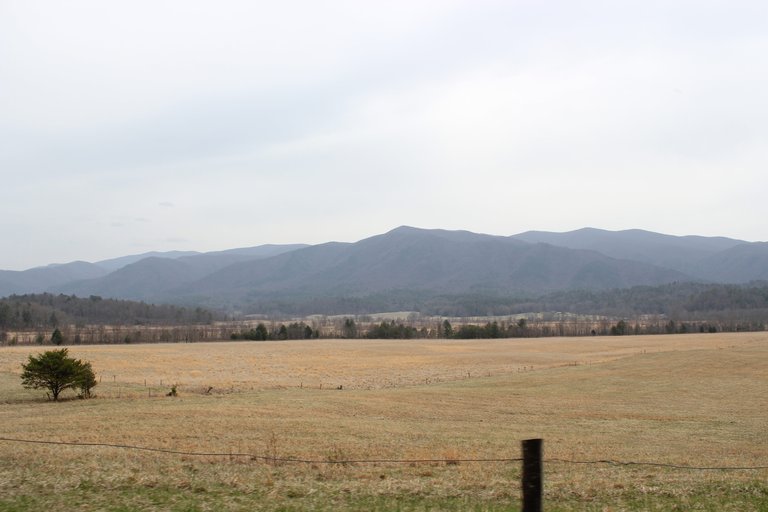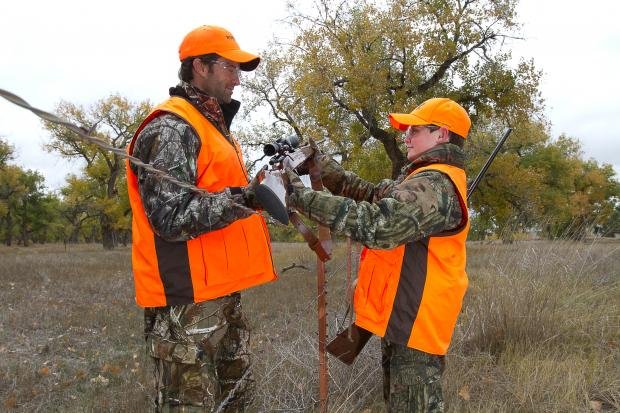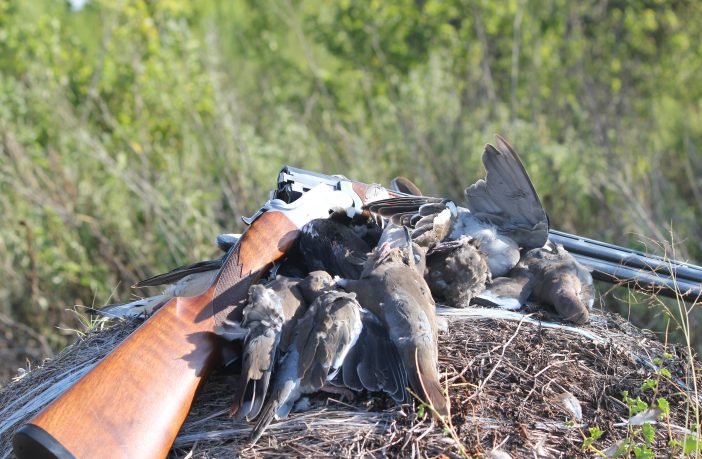Turkey Hunting Tips and Tactics for a Successful Hunt

Turkey hunting is the manipulation of communication. The pursuit of gobblers can be maddening one day and easy the next. We scout, hike and call for those fractions of a second a gobble cracks the silence. Think about turkey hunting like this; of the millions of acres in the world you need to break down the world to a mere 30 yards. Use the following turkey hunting tips to improve your chances of success this season.
Turkey Hunting Tips and Tactics
Proper Scouting
When scouting, work outward in a circle on your map to locate food sources and strutting zones.
Turkeys will follow a cyclical daily routine, albeit a rough circle and they generally will roost in the same area for a period of time unless spooked. Finding roosting trees is an indication of where to begin your search to reverse engineer a day in the life of a gobbler. Roosting trees can be characterized with strong limbs and protect birds from the wind. The best indication is to find feathers and scat near the base of trees.
Typically, the zones you are looking for will have some similarities to open fields. Don’t discount steep areas either which birds crave for scratching for grubs. In the pre-season scouting identify feeding areas by the cleared areas of leaves which are not like a buck scrape but expose the top layer of leaves from the ground floor. During mid-morning hours if the birds fall silent, there is nothing to lose by setting up in known feeding areas and being patient for a few hours.
Weather Considerations
Do you pray for rainy mornings in the spring to justify rolling over in bed? If I had to choose between a typical sunny morning and a rainy drizzle with a bit of wind, I'm clothed in my rain gear before I even crawled out of bed. Hunting turkeys in the rain is the most overlooked tactic in the turkey world. Gritty conditions force hens to head to their nests early and leave the males lonely.
Hunting turkeys in the rain is the most overlooked tactic in the turkey world. The gritty conditions force hens to head to their nests early and leave the males lonely. I’ve found turkeys to be far more receptive on overcast and rainy mornings and typically there are not many hunters braving the elements keeping the pressure down. Turkeys use fields religiously on rainy days to take advantage of the softened grounds. It also allows them to see and hear better as the noise from rain within the woods and trees hampers their ability to deploy their best defense systems.
Terrain Considerations
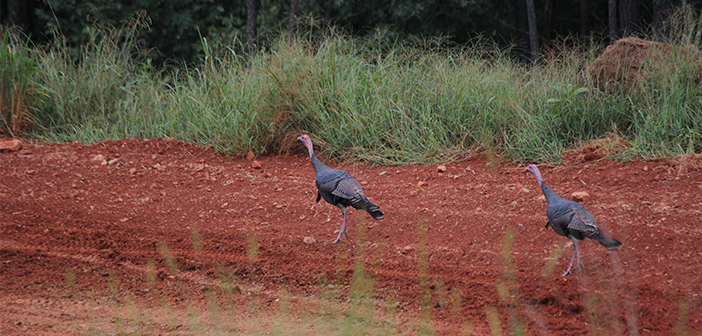
Terrain features make a difference in your setups and can be the difference between a sot or not seeing the turkey at all. One of the biggest mistakes a turkey hunter can make is to try and call a turkey downhill. While guiding once during a miserable wet and snow-filled youth turkey hunt I made the mistake of setting up below a dirt road with the gobbler just above us in elevation. It became apparent he didn’t want anything to do with my calling as he was naturally moving up the hill despite our incredibly close distance. Never lose elevation when working a gobbler, stay even in elevation or above a gobbling turkey as they naturally prefer to work uphill.
Have you ever scrambled to get set as fast as possible? We’ve all scrambled to set up with a bird approaching only to wish you had a better vantage point. In the adrenaline induced fervor, it is easy to make a mistake on where you ought to sit. Sitting too close to the edge of a hill or ridge is a mistake since it gives you little room for error. Having to make a shot on a turkey too close can lead to a rushed shot. Give yourself enough space between where you think a turkey is going to appear and where you will sit.
Return to the Roost
During this time of the day, especially as the spring rolls on, hens leave the tom to tend their nests leaving toms vulnerable to calls. This tactic can require some patience but has long been a card in the proverbial deck of seasoned turkey hunters.
If you’ve never had a gobbler fall silent after a fiery morning on the roost, then you have not hunted long enough. Getting ghosted by a big gobbler after fly-down is one of the most frustrating aspects of hunting turkeys, yet, there is a straightforward solution. If he responded to you off the roost understand he acknowledged your presence. Secondly, he remembers where you were. In the late morning or early afternoon (depending on your state regulations) return to where you had last heard him gobble and make your set up. During this time of the day, especially as the spring rolls on, hens leave the tom to tend their nests leaving toms vulnerable to calls. This tactic can require some patience but has long been a card in the proverbial deck of seasoned turkey hunters.
The Use of Decoys
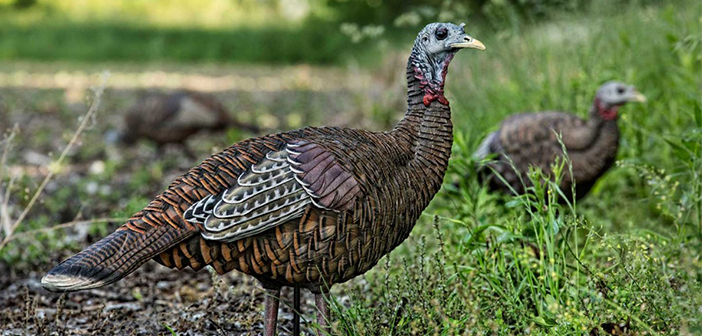
Courtesy of Rogers Sporting Goods
Decoys have been written about many times, and yes, there are different positioning tactics to consider; using strutters vs. jakes vs. solo hens, where to put the decoy, etc. Sometimes it’s best to leave the decoy in your vest. Although this seems counter-intuitive, each scenario in the turkey woods is supremely different. Consider the wary nature of mature gobblers late in the season. A bird who has been the subject of pressure for months and heard every bad call and run up on a fake hen or two may not appreciate traditional tactics. One of the best tactics for not using a decoy is to drop a caller 50 yards behind the shooter with some terrain feature between the shooter and the caller to give to keep the birds guessing.
Have you ever found yourself frustrated with the elusiveness of a turkey? When do you reach that point in the season where the “gloves come off? The internet has its way of making something popular almost overnight. The tactic of turkey reaping is the act of taking an old turkey tail fan or strutting decoy and inching yourself towards a mature tom. In theory, the tom will see your act of aggression on his turf and sprint at you to fight. Internet videos capturing this adrenaline-fueled tactic proves its viability.
Should you choose to crawl towards turkeys this spring keep in mind, the reaping tactic is safest on private grounds and ought to be a tactic deployed in areas where the tom to hen ratio is somewhat even.
If the competition for hens is higher in an area, using aggressive tactics like reaping or just sitting over a strutting decoy plays upon the competitive atmosphere for hens. The decision to use aggressive tactics with tom decoys ought to be decided upon observation of the area because spooking a gobbler can ruin the hunting for the entire season.
Conclusion
Turkey hunting is a pursuit with many ebbs and flows. The daily repositioning of the chips, each laying down their cards in the effort to win. We continuously are applying what we learn with each encounter, building a story with a particular bird and applying the right amount of pressure until his habits and insecurities are pushed on just enough his guard comes down for a few moments in time. The manipulation of communication in the turkey woods truly is an obsession.
Article by Jason Reid

